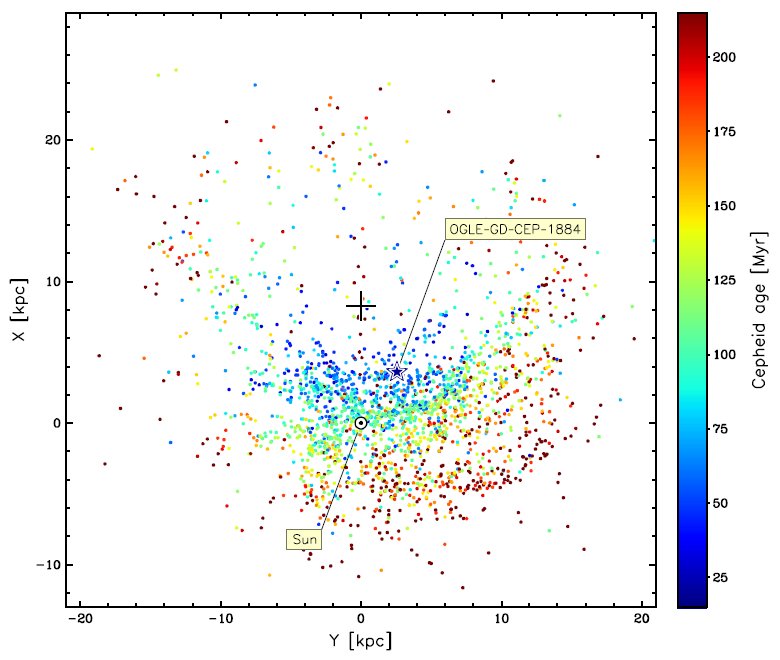The OGLE Collection of Variable Stars
Discovery of the Longest-Period Classical Cepheid in the Milky Way
We report the discovery of the classical Cepheid OGLE-GD-CEP-1884 (= GDS_J1535467-555656) with the longest pulsation period known in our Galaxy. The period of 78.14 days is nearly 10 days longer than that of the previous record-holding Cepheid, S Vulpeculae, and thus, OGLE-GD-CEP-1884 can be categorized as the first ultra-long-period Cepheid in the Milky Way. This star is present in the ASAS-SN and Gaia DR3 catalogs of variable stars, but it has been classified as a long-period variable in those catalogs. Based on more than 10 years of the photometric monitoring of this star carried out by the OGLE project in the I and V bands and a radial velocity curve from the Gaia Focused Product Release, we unequivocally demonstrate that this object is a fundamental-mode classical Cepheid.

By employing the mid-infrared period-luminosity relation, we determine the distance to OGLE-GD-CEP-1884 (4.47 ± 0.34 kpc) and place it on the Milky Way map, along with about 2400 other classical Cepheids. We also discuss the potential of finding additional ultra-long-period Cepheids in our Galaxy.

OGLE photometric data are available to the astronomical community from the OGLE Internet Archive and through the on-line search form in the OGLE Collection of Variable Stars.
PLEASE cite the following paper when using the data or referring to these OGLE results:
Soszyński et al., 2024, The Astrophysical Journal Letters, 965, L17
(arXiv:2404.00151)
Any comments about the data and the form of their presentation are welcome as they can improve the future releases of OGLE analysis. Send your messages to this address.
 back
back back
back